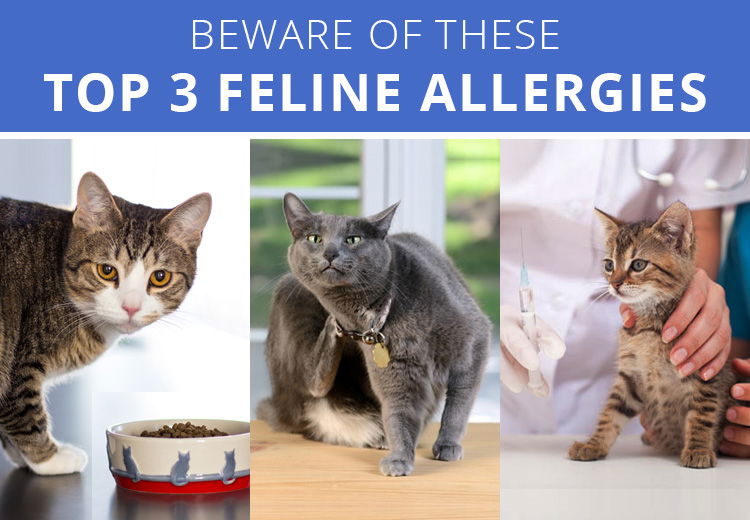 Mar 12, 2018
Mar 12, 2018

A feline can develop allergy from fleas, food or by inhaling substance known as allergen, which is unfamiliar to her immune system. A cat suffering from any form of allergy may show the following signs:
Other serious reactions to these allergies can come in the form of skin irritation, irritation in eyes and problem in breathing. Initially, these symptoms may appear normal to a cat parent. However, if the symptom persists, and not treated on time, then these normal appearing signs may turn into serious health disorders for a feline.
The top three feline allergies about which a cat parent should be aware of are as follows:
Food Allergy
A cat may invoke a response either to particular ingredient in her food plate or when introduced an altogether new diet. Cats that have been fed the same diet for a long time can become more vulnerable to food allergy.
Symptoms in cats with food allergy are
Beef, dairy products, chicken, lamb and rice are some ingredients that may cause allergic reactions in a cat. Cat food allergy can be addressed by putting her on the test called food elimination test trial. Under this, a feline would be given a standard diet or a novel ingredient diet, which can be duck and potato for weeks. This standard diet is as such that it would trigger no allergic response in a feline. Once the cat gets used to this new diet, she will be given susceptible ingredients, one at a time to gauge her reaction. The food or ingredient, which triggers a response, will be eliminated from the cat’s diet. The test would take minimum 3 months to decode the foods, which are root cause of food allergy in a cat. Until the completion of the test, do not give your cat any other food or treats.
Flea Allergy
Another common allergy found in cats is due to flea infestation. Flea allergy is the most common type of feline allergies. However, some cats have bigger response when bitten by a flea parasite. The main culprit here is the flea saliva, which a flea injects on a cat’s skin. This causes an itching sensation on the whole body. The feline will soon end up indulging in itching and scratching her body parts mindlessly.
A cat parent when dealing with flea allergy should first relieve her cat by eliminating fleas present on her cat’s body with the help of flea preventives, followed by a vet visit for further check-ups.
Products such as Frontline Top Spot For Cats and Advocate are great flea killers.
Inhalant Allergy
This is the third most common type of cat allergy. When a feline unknowingly, inhales airborne particles such as pollen, mold, dust mites, perfume, etc., an itching sensation and red rashes are seen around her head and neck. The reaction due to breathing these substances is called inhalant allergy.
Allergies can affect any feline and can cause health issues. However, as a cat parent the only thing to note here is to not allow these allergies to be turned into serious health disorders by not paying attention to them initially. Thus, consult your vet if you come across any such type of allergy in your feline.